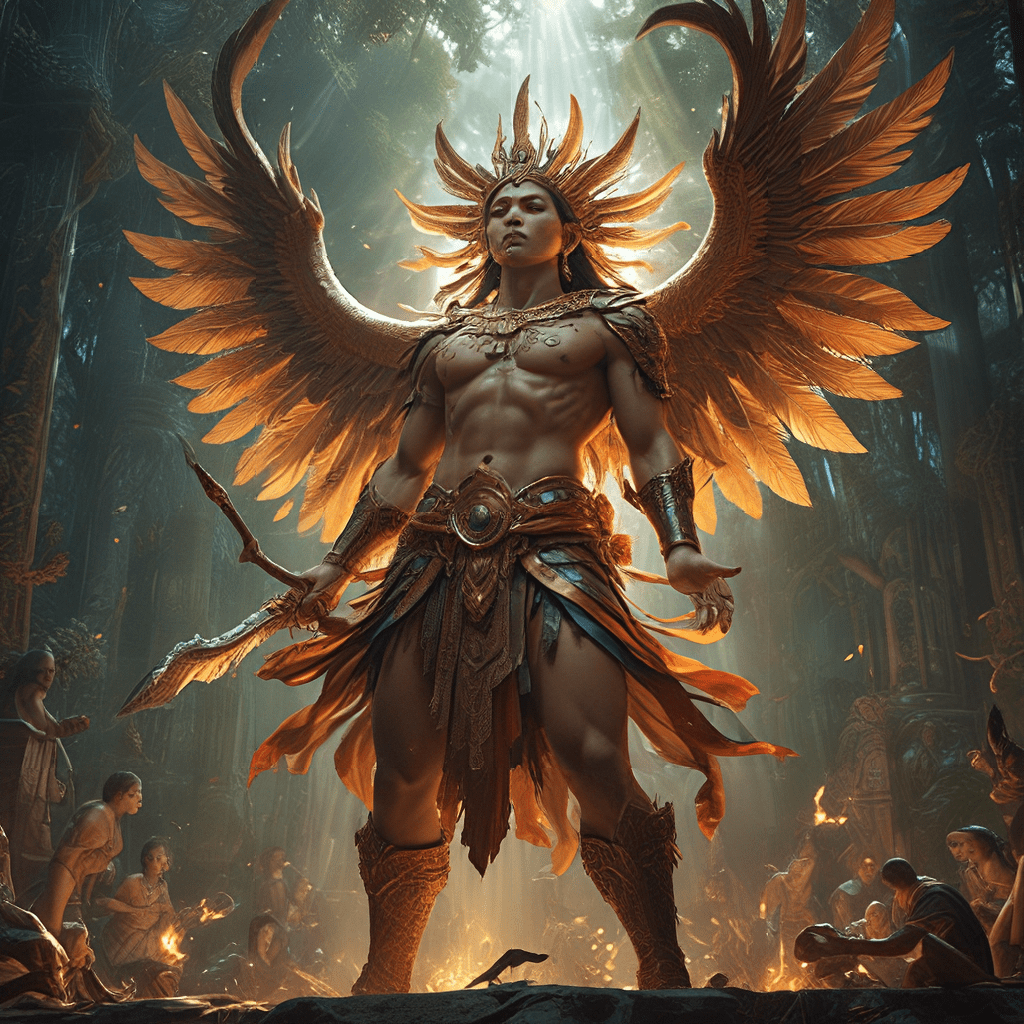The Phoenix’s Ashes: Myths of Rebirth and Renewal
Introduction
The myth of the Phoenix has captivated human imagination for centuries, symbolizing the profound themes of rebirth and renewal. Found in various cultures across the globe, the Phoenix embodies the cyclical nature of life, death, and resurrection. As a creature that rises from its own ashes, the Phoenix serves as a powerful symbol of hope and transformation, reminding us that new beginnings often emerge from the remnants of the past.
The Origin of the Phoenix Myth
Historical roots of the Phoenix can be traced back to ancient civilizations, with significant mentions in Egyptian and Greek mythology. The Egyptians revered a bird known as the Bennu, which was associated with the sun, creation, and rebirth. In Greek mythology, the Phoenix is described as a magnificent bird that lived for hundreds of years before bursting into flames and being consumed by fire, only to rise again from its ashes.
The symbolism of the Phoenix in mythology extends beyond mere physical rebirth; it represents the eternal cycle of life. The process of dying and being reborn is a recurring theme in many cultures, emphasizing the notion that endings are merely new beginnings in disguise.
Cultural Variations of the Phoenix
While the Western interpretation of the Phoenix focuses on its fiery rebirth, Eastern cultures offer distinct representations of similar themes. For instance, in Chinese culture, the Fenghuang embodies harmony and virtue, often symbolizing the union of yin and yang. Unlike the singular nature of the Phoenix, the Fenghuang represents both male and female elements, highlighting the balance and interconnectedness of life.
Across different cultures, the themes of rebirth and renewal manifest in various ways:
- Egyptian Mythology: The Bennu bird, associated with the sun and rebirth.
- Greek Mythology: The Phoenix, known for its cycle of burning and rising.
- Chinese Mythology: The Fenghuang, symbolizing balance and virtue.
- Native American Traditions: Various birds that symbolize renewal, such as the Thunderbird.
The Cycle of Death and Rebirth
The life cycle of the Phoenix consists of three distinct stages: death, ashes, and rebirth. Each stage carries deep symbolic meanings that resonate with personal and societal contexts.
- Death: Represents the end of an era or phase in life. This stage often signifies loss, grief, and the challenges that come with change.
- Ashes: Symbolizes the remnants of the past. In this stage, one can reflect on experiences, learning from them before moving forward.
- Rebirth: The emergence of new life and opportunities. This stage represents hope, resilience, and the potential for growth.
Understanding this cycle allows individuals and societies to embrace change, recognizing that through adversity, new possibilities can arise.
The Phoenix in Literature and Art
The Phoenix has been a prominent figure in literature, poetry, and visual arts throughout history. Its symbolism resonates deeply within narratives that explore themes of transformation and resilience.
Notable works featuring the Phoenix archetype include:
- Harry Potter and the Order of the Phoenix by J.K. Rowling: The Phoenix serves as a symbol of hope and the fight against darkness.
- The Song of the Phoenix in ancient Chinese poetry: Celebrates the beauty and virtue of the mythical bird.
- The Phoenix by Edgar Allan Poe: A poem that reflects on the themes of death and rebirth.
Visual arts have also captured the essence of the Phoenix, with artists often depicting the creature in vibrant colors, emphasizing its fiery nature and the beauty of resurrection.
Modern Interpretations of the Phoenix Myth
In contemporary society, the Phoenix myth remains relevant, symbolizing resilience in the face of adversity. Various forms of media, including literature, film, and pop culture, have adopted the Phoenix as a metaphor for overcoming challenges and personal transformation.
Examples of the Phoenix in modern narratives include:
- Movies: Films like The Hunger Games showcase characters who rise from their struggles, embodying the spirit of the Phoenix.
- Literature: Many modern novels feature protagonists who undergo significant transformations, paralleling the Phoenix’s cycle of rebirth.
- Video Games: Characters like Fawkes from the Harry Potter video game series exemplify the Phoenix’s regenerative qualities.
The Psychological Implications of Rebirth
The Phoenix myth serves as a powerful metaphor for personal transformation and psychological resilience. In psychology, the process of rebirth is often linked to healing and growth following trauma or significant life changes.
Theories related to renewal and resilience include:
- Post-Traumatic Growth: The idea that individuals can emerge stronger after experiencing trauma.
- Resilience Theory: Focuses on the capacity to recover from difficulties.
- Transformational Leadership: Leaders who inspire change often embody the qualities of the Phoenix, encouraging others to rise from challenges.
The Phoenix in Spirituality and Religion
The Phoenix has found its place in various spiritual practices and religious beliefs, symbolizing hope and inspiration during challenging times. In Christianity, the Phoenix has been associated with resurrection, mirroring the story of Christ’s resurrection.
In other spiritual contexts, the Phoenix represents:
- Renewal of Spirit: A reminder of the potential for spiritual awakening and transformation.
- Cycles of Life: Emphasizing the interconnectedness of life, death, and rebirth.
- Hope in Adversity: Serving as a symbol of hope for those facing struggles and hardships.
Lessons from the Phoenix: Embracing Change
Embracing the lessons of the Phoenix can lead to personal growth and transformation. Here are practical applications derived from the Phoenix myth:
- Accept Change: Recognize that change is a natural part of life and can lead to new opportunities.
- Reflect on Past Experiences: Use past challenges as learning experiences to inform future decisions.
- Cultivate Resilience: Develop coping strategies to navigate difficult times and foster a sense of inner strength.
Conclusion
The enduring legacy of the Phoenix myth serves as a powerful reminder of the importance of rebirth and renewal in our personal and collective journeys. It encourages us to embrace change, find hope in adversity, and recognize the potential for transformation within ourselves and our communities. As we navigate the cycles of life, may we all find the courage to rise from our ashes and soar anew.


